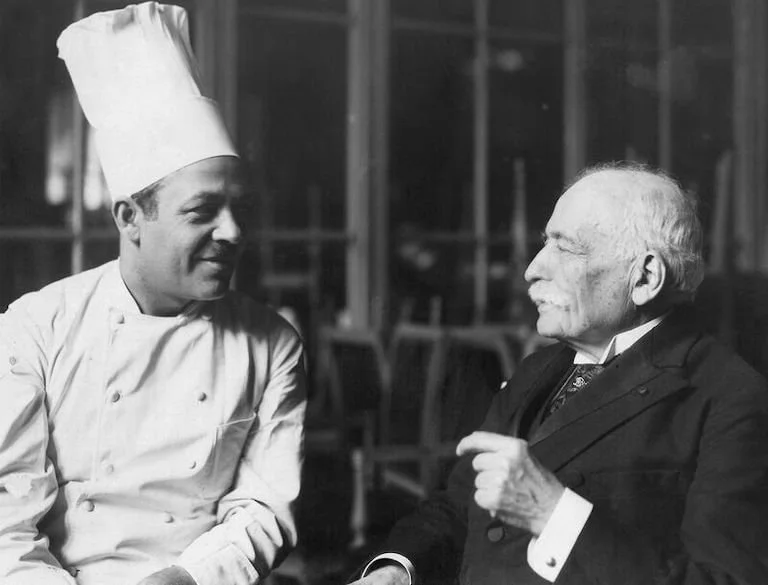The Evolution of the Kitchen Brigade System
The kitchen brigade system is a cornerstone of professional culinary operations, ensuring efficiency, consistency, and excellence in kitchens worldwide. Its structured hierarchy and defined roles have enabled kitchens to function as well-oiled machines, even during the busiest service times. But where did this system originate, and how has it evolved to meet the needs of modern kitchens? This article delves into the fascinating history of the kitchen brigade system, exploring its origins, development, and enduring relevance in today’s culinary landscape.
Origins: A Revolutionary Idea in Culinary Organization
The kitchen brigade system, also known as the brigade de cuisine, was developed by Georges-Auguste Escoffier in the late 19th and early 20th centuries. Escoffier, often referred to as the "father of modern French cuisine," sought to address the chaotic and inefficient conditions he observed in many professional kitchens during his time. Drawing inspiration from the military's hierarchical structure, Escoffier devised a system that streamlined kitchen operations by assigning specific roles and responsibilities to each member of the team.
Before Escoffier’s reforms, kitchens operated with little formal structure, often leading to confusion, duplication of effort, and inconsistency in food quality. Escoffier’s brigade introduced order, discipline, and specialization, laying the groundwork for the professional kitchens we recognize today.
Key Roles in the Traditional Brigade System
Escoffier’s system divided kitchen staff into distinct roles, each focusing on a specific aspect of food preparation or kitchen management. Some of the key positions in the traditional brigade include:
Chef de Cuisine (Executive Chef): The leader of the kitchen, responsible for menu planning, staff management, and overall kitchen operations.
Sous Chef (Deputy Chef): The second-in-command, assisting the chef de cuisine and overseeing daily operations.
Chef de Partie (Station Chef): Specialists in charge of particular stations, such as the grill, sauté, or pastry stations.
Commis (Assistant): Junior staff members working under the chef de partie to learn the craft and assist with preparation tasks.
Entremetier (Vegetable Cook): Responsible for preparing soups, vegetables, and egg dishes.
Saucier (Sauce Chef): Focused on creating sauces, sautéed items, and stews, often considered one of the most prestigious roles.
Pâtissier (Pastry Chef): Dedicated to desserts, baked goods, and pastries.
Other specialized roles included the poissonier (fish cook), boucher (butcher), and garde manger (cold kitchen supervisor), among others. This compartmentalization allowed each team member to hone their skills and contribute to the kitchen’s overall efficiency.
The Spread and Adaptation of the Brigade System
Escoffier’s brigade system gained widespread adoption in Europe and beyond, particularly in fine dining establishments and large hotels. As culinary traditions spread globally, the system was adapted to suit different cuisines, kitchen sizes, and operational needs.
In smaller establishments, for instance, roles are often consolidated. A single chef might assume multiple responsibilities, such as handling both sauté and sauce preparation. Conversely, in large-scale operations like cruise ships or luxury resorts, the brigade system is often expanded with additional roles to manage the higher volume of food production.
The Brigade System in Modern Kitchens
While the fundamental principles of the brigade system remain intact, modern kitchens have introduced changes to reflect contemporary needs and values. Today’s kitchens emphasize teamwork, flexibility, and cross-training, allowing staff to step into different roles as needed. This adaptability is particularly important in smaller operations or during staffing shortages.
Technology has also played a role in transforming kitchen operations. Advanced equipment, software for inventory and scheduling, and innovative cooking techniques have streamlined tasks, reducing the need for highly specialized roles in some cases. Despite these changes, the core idea of the brigade system—organizing tasks to maximize efficiency—remains relevant.
Benefits of the Brigade System
The enduring success of the brigade system can be attributed to the numerous benefits it offers, including:
Clarity of Roles: By clearly defining each team member’s responsibilities, the system minimizes confusion and ensures accountability.
Efficiency: Specialization allows chefs to focus on their areas of expertise, leading to faster and more consistent food preparation.
Skill Development: The hierarchical structure provides a clear path for career progression, enabling junior staff to learn from more experienced colleagues.
Consistency: Standardized processes ensure a consistent dining experience for customers, a critical factor in the success of any culinary establishment.
Challenges and Criticisms
Despite its advantages, the brigade system is not without challenges. Critics argue that its rigid hierarchy can stifle creativity and lead to overly authoritarian management styles. Additionally, the intense pressure and long hours associated with some brigade-style kitchens have raised concerns about staff well-being and work-life balance.
In response to these issues, many modern kitchens are adopting a more collaborative approach. Open communication, mentorship, and a focus on mental health are becoming increasingly important in fostering a positive and productive kitchen environment.
Lessons from History for Future Kitchens
The kitchen brigade system’s success lies in its adaptability. By understanding its history and principles, professional chefs and restaurant owners can apply its lessons to create efficient, harmonious, and innovative kitchens. Whether running a Michelin-starred restaurant or a bustling café, the brigade system offers a framework that can be tailored to meet diverse needs.
As the culinary industry continues to evolve, the spirit of Escoffier’s brigade lives on—a testament to the timeless value of organization, discipline, and teamwork in the pursuit of culinary excellence.

